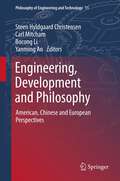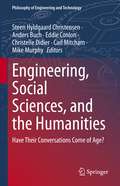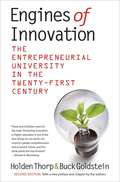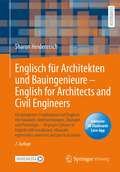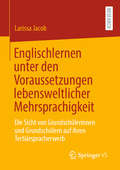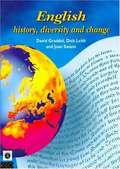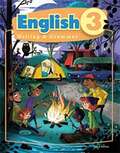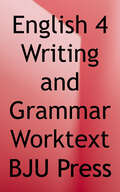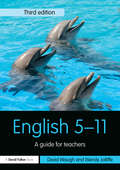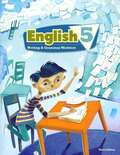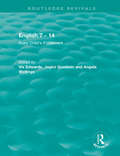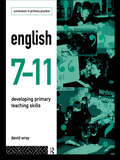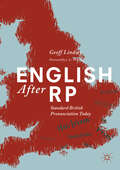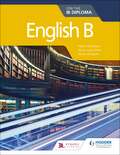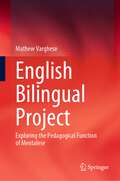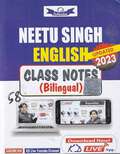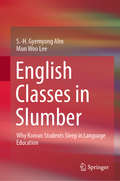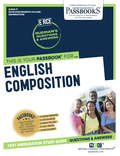- Table View
- List View
Engineering, Development and Philosophy
by Carl Mitcham Steen Hyldgaard Christensen Yanming An Bocong LiThis inclusive, cross-cultural study rethinks the nexus between engineering, development, and culture. It offers diverse commentary from a range of disciplinary perspectives on how the philosophies of today's cultural triumvirate--American, European and Chinese--are shaped and given nuance by the cross-fertilization of engineering and development. Scholars from the humanities and social sciences as well as engineers themselves reflect on key questions that arise in this relational context, such as how international development work affects the professional views, identities, practice and ethics of engineers. The first volume to offer a systematic and collaborative study that cuts across continental boundaries, the book delineates the kinds of skills and competences that tomorrow's engineering success stories will require, and analyzes fascinating aspects of the interplay between engineering and philosophy, such as how traditionally Chinese ways of thinking can influence modern engineering practice in the world's most populous country. China's problematic mix of engineering woes and wonders, from the high-profile crash on its high-profile rail network to its 'bird's nest' Olympic stadium, adds to the urgency for reform, while Europe's Enlightenment-informed legal frameworks are contrasted with Chinese mechanisms in their governance of the field of nanotechnology, a crucial element of future technical evolution. Fascinating and compelling in equal measure, this volume addresses one of the topics at the leading edge of humanity's quest to survive, and to thrive.
Engineering, Social Sciences, and the Humanities: Have Their Conversations Come of Age? (Philosophy of Engineering and Technology #42)
by Carl Mitcham Steen Hyldgaard Christensen Christelle Didier Mike Murphy Anders Buch Eddie ConlonThis book presents a critical examination of conversations between engineering, social sciences, and the humanities asking whether their conversations have come of age. These conversations are important because ultimately their outcome have real world consequences in engineering education and practice, and for the social and material world we inhabit. Taken together the 21 chapters provide scholarly-argued responses to the following questions.Why are these conversations important for engineering, for social sciences, and for the humanities?Are there key places in practice, in the curriculum, and in institutions where these conversations can develop best?What are the barriers to successful conversations?What proposals can be made for deepening these conversations for the future?How would we know that the conversations have come of age, and who gets to decide?The book appeals to scholarly audiences that come together through their work in engineering education and practice. The chapters of the book probes and access the meetings and conversations, and they explore new avenues for strengthening dialogues that transcend narrow disciplinary confines and divisions.“The volume offers a rich collection of descriptive resources and theoretical tools that will be useful for researchers of engineering practices, and for those aiming to reshape the engineering lifeworld through new policies. The book depicts the current state of the art of the most visible SSH contributions to shaping engineering practices, as well as a map of research gaps and policy problems that still need to be explored.” - Dr. Ir. Lavinia Marin, TU Delft, Electrical Engineering and Philosophy
Engines of Innovation
by Holden Thorp Buck GoldsteinInEngines of Innovation, Holden Thorp and Buck Goldstein make the case for the pivotal role of research universities as agents of societal change. They argue that universities must use their vast intellectual and financial resources to confront global challenges such as climate change, extreme poverty, childhood diseases, and an impending worldwide shortage of clean water. Combining their own experiences cultivating an entrepreneurial mindset within one of the nation’s elite public universities with detailed descriptions of the approaches taken by others, Thorp and Goldstein provide not only an urgent call to action but also a practical guide for our nation's leading institutions to become major players in solving the world's biggest problems. The result is a provocative and thoughtful beginning to an important conversation among educators, their supporters and trustees, policymakers, and the public at large as to how the American research university can best meet its societal responsibilities. InEngines of Innovation, Holden Thorp and Buck Goldstein make the case for the pivotal role of research universities as agents of societal change. They argue that universities must use their vast intellectual and financial resources to confront global challenges such as climate change, extreme poverty, childhood diseases, and an impending worldwide shortage of clean water. Combining their own experiences cultivating an entrepreneurial mindset within one of the nation’s elite public universities with detailed descriptions of the approaches taken by others, Thorp and Goldstein provide not only an urgent call to action but also a practical guide for our nation's leading institutions to become major players in solving the world's biggest problems. The result is a provocative and thoughtful beginning to an important conversation among educators, their supporters and trustees, policymakers, and the public at large as to how the American research university can best meet its societal responsibilities.
Englisch für Architekten und Bauingenieure – English for Architects and Civil Engineers: Ein kompletter Projektablauf auf Englisch mit Vokabeln, Redewendungen, Übungen und Praxistipps - All project phases in English with vocabulary, idiomatic expressions, exercises and practical advice
by Sharon HeidenreichDieses Sprach-Lehrbuch wurde speziell für Architekten und Bauingenieure entwickelt, um sie zu befähigen bei der Kommunikation auf Englisch in der Berufspraxis mit fachlicher Kompetenz zu überzeugen.Das Buch folgt den einzelnen Planungs- und Ausführungsphasen eines Bauprojektes und gewährt währenddessen Einblicke z. B. in die Stadtplanung, Technische Gebäudeausstattung, Nachhaltigkeitsaspekte und Bauen im Bestand. Die 7. Auflage, in einem neuen, modernen Layout, wurde überarbeitet und durch viele Wortdefinitionen sowie Lernhinweise ergänzt.In Kooperation mit der Gesellschaft für Weiterbildung im Bauwesen (GeWeB) steht den Kunden des Buches zur Vertiefung der Lerninhalte ein kostenfreies E-Learning Modul mit 15 Übungen zum Hörverstehen sowie weiteren Aufgaben zu Grammatik und Fachvokabular zur Verfügung.QR Codes im Buch ermöglichen außerdem einen direkten Zugriff auf die Hörverstehens-Übungen an den passenden Stellen.Neu in dieser Auflage: Laden Sie die Springer Nature Flashcards-App kostenlos herunter und nutzen Sie exklusives Zusatzmaterial, um Ihr Fachvokabular zu prüfen.Nach dem Gemeinsamen Europäischen Referenzrahmen (GER) für Sprachen entspricht das Lehrwerk einem Niveau von B2/C1.
Englischlernen unter den Voraussetzungen lebensweltlicher Mehrsprachigkeit: Die Sicht von Grundschülerinnen und Grundschülern auf ihren Tertiärspracherwerb
by Larissa JacobDas Buch greift mit der Frage nach dem Fremdspracherwerb von Lernenden, die bereits mindestens zweisprachig sind, eine Thematik auf, die in der englisch- und fremdsprachendidaktischen Forschung bisher wenig beachtet wurde. So erfasst die empirische Studie die Sichtweise lebensweltlich mehrsprachiger Grundschulkinder auf ihre Tertiärspracherwerbssituation und abstrahiert die qualitativen Ergebnisse in einem Modell mehrsprachlicher Identitäten. Dieses zeigt zum einen auf, mit welchen mehrsprachlichen Lernerfahrungen und den sich hieraus entwickelten Orientierungen Kinder den Grundschulenglischunterricht besuchen und zum anderen, wie stark Fremdspracherwerb und Identitätskonstruktion miteinander verbunden sind..
English pupil's books Grade 07
by Panel of experts of the ministry of education Sri Lanka - අධ්යාපන අමාත්යාංශයේ විෂය විශේෂඥ මණ්ඩලයක් විසිනි.07 වන ශ්රේණියේ ඉංග්රීසි විෂය සඳහා රජය විසින් නිර්දිෂ්ට පාඨ ග්රන්ථයයි.
English (Apexit) class 12 - GSTB: અંગ્રેજી અપેક્ષિત ધોરણ ૧૨ પ્રશ્નસંગ્રહો (માર્ચ, 2020ની બોર્ડ-પરીક્ષા માટે લેટેસ્ટ પેપર-પેટર્ન અનુસાર)
by Navneetધોરણ ૧૨ અપેક્ષિતમાં ૫ વિભાગ આપેલ છે જેમાં ૨૧ પ્રશ્નસંગ્રહો આપેલ છે અને ૨ આદર્શ પ્રશ્નપત્ર આપેલ છે.
English (Apexit) class 12 - GSTB
by Navneetધોરણ ૧૨ અપેક્ષિતમાં ૫ વિભાગ આપેલ છે જેમાં ૨૧ પ્રશ્નસંગ્રહો આપેલ છે અને ૨ આદર્શ પ્રશ્નપત્ર આપેલ છે.
English 10th Standard - Tamilnadu Board
by Training State Council of Educational ResearchEnglish Textbook for the 10th Standard Students, preparing for Tamil Nadu State Board Exam.
English 3: Writing and Grammar Worktext
by Bju PressThe student edition combines grammar and writing practice in one consumable book. Grammar chapters emphasize traditional grammar to support the writing chapters. Paragraph development is simplified with a color-coded paragraph structure showing a topic sentence, detail sentences, and a concluding sentence. In the writing chapters, the step-by-step writing process enables the students to write reports, essays, and other assignments with confidence. <p><p>Additional writing opportunities are available in the grammar lessons. The grammar skills build from lesson to lesson, providing spiral review of previously learned concepts. The worktext provides opportunities for teacher-guided practice, independent practice, chapter reviews, and cumulative reviews. A handbook in the back matter includes a thesaurus, grammar songs, capitalization rules, and abbreviations charts.. - Publisher.English 3 Writing and Grammar Worktext
English 4 Writing and Grammar Worktext
by Bju PressThis book helps the fourth graders build lifelong skills with this easy-to-use curriculum. They'll learn about grammar concepts including adjectives, adverbs, prepositions, and prefixes---and how to write poetry, stories, book reviews, essays, research papers, and more. Includes a teacher's edition, student worktext, tests, and answer key.
English 5-11: A guide for teachers (Primary 5-11 Series)
by David Waugh Wendy JolliffeEnglish is central to the primary-school curriculum and successfully mastering the basics has a significant influence on pupils' ability to learn and achieve their future goals. Now fully updated, English 5-11 provides comprehensive, up-to-date and creative guidance on teaching English in the primary school. Each chapter provides the busy teacher with indispensable advice and guidance, as well as opportunities to reflect upon current practice in the classroom. Key areas covered include: language and literacy development; grammar, punctuation and spelling; talk for learning; systematic synthetic phonics; fiction, poetry and non-fiction; drama and creativity; teaching in a multilingual classroom; ICT Planning and assessment. This third edition reflects changes in government policy and gives greater attention knowledge about language and is closely related to the changing curriculum for primary English. The highly experienced authors are former literacy advisors and have frontline teaching, school-management and teacher-training experience. This book will be an invaluable resource for all trainee and practising teachers interested in teaching English in an accessible, contemporary and dynamic way.
English 5: Writing and Grammar Student Worktext
by Bju PressBJU Press’ English 5 3rd Edition Worktext combines grammar and writing practice in one volume. Grammar concepts include parts of speech, sentence structure, conventions, and usage. Writing practice covers paragraph development, the writing process, editing, and proofreading. Activities to develop study and research skills are also provided along with assignments for journal and reflection pages. Writing projects include diamante and sense poem styles, book review, compare-contrast essay, persuasive letter, personal narrative, and a research report. Students will learn key study skills like taking notes, outlining, internet safety, keyword searches, source reliability and research skills like types of reference books, using the library, and using the internet. The Teacher Edition is sold separately. 400 pages, softcover. Grade 5.
English 7 - 14: Every Child's Entitlement (Routledge Revivals)
by Viv Edwards, Jagiro Goodwin and Angela WellingsOriginally published in 1991. The central aim of this book is to make English in the National Curriculum accessible and relevant to all pupils. In attempting to meet this aim, the authors set out to bring together a theoretical basis for the main English profile components and practical suggestions for good practice for all schools. In the first section oracy, reading and writing are examined and in the second section three case studies describe a range of projects which have taken place in different schools.
English 7-11: Developing Primary Teaching Skills (Curriculum In Primary Practice Ser.curriculum In Primary Practice Ser.)
by David WrayThis book focuses on approaches to the teaching of primary English at Key Stage 2 in the context of the National Curriculum. Through a series of guided activities, teachers are encouraged to reflect upon particular teaching strategies and activities such as: an analysis of language and literacy, the processes of language and literacy, the use of topic work, a critical look at classroom environments, and examination of the texts which children read and write, and a discussion of the role of the teacher.
English After RP: Standard British Pronunciation Today
by Geoff LindseyThis book concisely describes ways in which today's standard British English speech differs from the upper-class accent of the last century, Received Pronunciation, which many now find old-fashioned or even comic. In doing so it provides a much-needed update to the existing RP-based descriptions by which the sound system of British English is still known to many around the world.The book opens with an account of the rise and fall of RP, before turning to a systematic analysis of the phonetic developments between RP and contemporary Standard Southern British (SSB) in vowels, consonants, stress, connected speech and intonation. Topics covered include the anti-clockwise vowel shift, the use of glottal stops, 'intrusive r', vocal fry and Uptalk. It concludes with a Mini Dictionary of well over 100 words illustrating the changes described throughout the book, and provides a chart of updated IPA vowel symbols.This book is an essential resource for anyone interested in British pronunciation and sound change, including academics in phonetics, phonology, applied linguistics and English language; trainers of English teachers; English teachers themselves; teachers of voice and accent coaches; and students in those areas.
English B for the IB Diploma
by Hyun Jung Owen Mark McGowan Aaron DeupreeExam board: International BaccalaureateLevel: IB DiplomaSubject: EnglishFirst teaching: September 2019First exams: Summer 2021Develop competent communicators who can demonstrate a sound conceptual understanding of the language with a flexible course that ensures thorough coverage of the updated English B Guide and is designed to meet the needs of all IB students at Standard and Higher Level.- Empower students to communicate confidently by exploring the five prescribed themes through authentic texts and skills practice at the right level, delivered in clear learning pathways. - Ensure students are able to produce coherent written texts and deliver proficient presentations with grammar and vocabulary introduced in context and in relation to appropriate spoken and written registers. - Improve receptive skills with authentic written texts, audio recordings spoken at a natural pace, and carefully crafted reading and listening tasks.- Promote global citizenship, intercultural understanding and an appreciation of English cultures through a wide range of text types and cultural material from around the world. - Deliver effective practice with a range of structured tasks within each unit that build reading, listening, speaking and writing skills.- Establish meaningful links to TOK and CAS, and identify learner profile attributes in action.The audio for the Student Book is FREE to download from www.hoddereducation.com/ibextras
English B for the IB Diploma
by Hyun Jung Owen Mark McGowan Aaron DeupreeExam board: International BaccalaureateLevel: IB DiplomaSubject: EnglishFirst teaching: September 2019First exams: Summer 2021Develop competent communicators who can demonstrate a sound conceptual understanding of the language with a flexible course that ensures thorough coverage of the updated English B Guide and is designed to meet the needs of all IB students at Standard and Higher Level.- Empower students to communicate confidently by exploring the five prescribed themes through authentic texts and skills practice at the right level, delivered in clear learning pathways. - Ensure students are able to produce coherent written texts and deliver proficient presentations with grammar and vocabulary introduced in context and in relation to appropriate spoken and written registers. - Improve receptive skills with authentic written texts, audio recordings spoken at a natural pace, and carefully crafted reading and listening tasks.- Promote global citizenship, intercultural understanding and an appreciation of English cultures through a wide range of text types and cultural material from around the world. - Deliver effective practice with a range of structured tasks within each unit that build reading, listening, speaking and writing skills.- Establish meaningful links to TOK and CAS, and identify learner profile attributes in action.The audio for the Student Book is FREE to download from www.hoddereducation.com/ibextras
English Bilingual Project: Exploring the Pedagogical Function of Mentalese
by Mathew VargheseToday, English is the global lingua franca and competent English communication skills should be one of the rights of all educated individuals irrespective of any socio-cultural limits. By introducing a new method, this book focuses on helping any learner to get sufficient communication skills in English as much as in the native language. This method helps one to avoid translating from mother tongue to English. And by using the method of thinking in English, one could acquire the required English bilingual skills naturally. The method is founded on the philosophical idea of mentalese—mind language as the base language of thinking available for humans for constructing thoughts. The proposed English Bilingual Project (EBP) helps one to transfer thoughts from a structureless mentalese to the grammatical structure of any language English/Japanese/Chinese. The method described in this book works in two ways: one it helps one to intuitively understand the working of mentalese; the other is by practicing think in English with the mentalese, one could generate the bilingual brain. The main procedure for transferring thoughts from the mentalese to English is through writing one’s thoughts. This helps one to think effectively in English like one’s own mother tongue. This method works as a prime requirement model for one to generate multilingual skills. The book resourced the idea of mentalese from the classical philosophy, reflects it with the modern generative theories, links it with the studies in neuro-linguistic studies on bilingualism and the bilingual brain.
English Class 6 - Nepal
by Curriculum Development Center Nepal Curriculum Development CentreThis accessible book has been published by ADRAD Nepal, with support of Australian Aid. All rights reserved. No part of this publication may be reproduced, stored in a retrieval system or transmitted, in any other form or by any means for commercial purpose without the priorpermission in writing of the Curriculum Development Centre.
English Class Notes (Bilingual) - Neetu Singh - Competitive Exam
by Neetu SinghA full course book of English notes for those who want to appear general exams - in English with explanations in Hindi - for English language learners. There are 34 chapters with illustrated examples and previous years questions from main general examinations for different posts.
English Classes in Slumber: Why Korean Students Sleep in Language Education
by Mun Woo Lee S.-H. Gyemyong AhnThis book explains why some Korean high school students sleep during English classes in spite of the emphasized value of English in their society. It examines how this sleeping-in-class phenomenon can be understood by means of such marginalized students’ emic outlooks on themselves, the target language, their teachers, schools, and society/culture; and by means of the views of teachers who have experienced such in-class sleepers. To understand the phenomenon more holistically, it pursues a multi-disciplinary approach drawing on studies of demotivation and amotivation, psychological needs, and student experiences of schooling, as well as sociocultural theories of learning and agency and of interpersonal dynamics, among others. On the basis of a multi-modal analysis of interview data from the student and teacher participants, it theoretically interprets the phenomenon at the classroom (‘micro-’), school (‘meso-’) and society-culture (‘macro-’) levels. Taking a humanistic/existential approach to education, it subsequently presents a number of cultural actions that it advocates implementing in a situation-sensitive manner to help in-class sleepers and their educational institutions awaken from their chronic slumber. Lastly, it presents practical and theoretical implications for more humanistic pedagogy, and global studies of student disengagement, in English-as-a-foreign-language classes.
English Composition: Connect, Collaborate, Communicate
by Ann Innoshita Karyl Garland Kate Sims Jeanne Tsutsui Keuma Tasha WilliamsThis OER textbook has been designed for students to learn the foundational concepts for English 100 (first-year college composition). The content aligns to learning outcomes across all campuses in the University of Hawai'i system. It was designed, written, and edited during a three day book sprint in May, 2019.
English Composition: Passbooks Study Guide (Excelsior/Regents College Examination Series #Ats-9a)
by National Learning CorporationThe Excelsior/Regents College Examinations (E/RCE) offer you an opportunity to obtain recognition for college-level learning and consists of exams designed to demonstrate achievement and mastery of various college-level subjects, such as the Arts and Sciences, Business, Criminal Justice, Education, Health and Nursing. The E/RCE English Composition Passbook® prepares you by sharpening knowledge of the skills and concepts necessary to succeed on the upcoming exam and the college courses that follow. It provides a series of informational texts as well as hundreds of questions and answers in the areas that will likely be covered on your upcoming exam.
